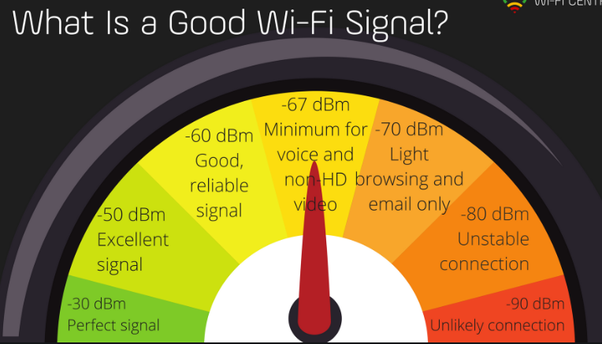
#Test wireless signal strength install#
It's a great idea if you live in the middle of a 100 acre farm, but probably not the solution if you have 8 neighbors within a short distance.īetter install a package that tells you all the WiFi networks nearby and see what could be interfering before worrying about strength, a simple channel change could potentially improve the Wi-Fi way more. In both cases the theory the client had was, up the signal strength, because my Wi-Fi isn't working, but that's great until your neighbor does the same, until everyone is interfering with everyone else. The last two jobs I worked on, we had to reduce the signal strength to make the Wi-Fi devices work correctly. This is why people do Wi-Fi surveys looking at signal strength, signal to noise ratio and signal to interference ratio. Press a button on the board to take three measurements of the wireless network signal strength and post the average result to a ThingSpeak channel. The ESP32 records and posts the signal strength of the wireless network that it is connected to.
#Test wireless signal strength how to#
You can have a 100% signal strength and zero wireless. This example shows how to use the wireless network functionality of ESP32 to post data to ThingSpeak. Please no, stop telling people it's all about signal strength, the number one cause of WiFi issues I have to deal with, in customer warehouses, is nothing to do with signal strength, all to do with too much strength, there are many factors that affect signals. Download and install an app or program for your wireless device that can measure the signal strength of a Wi-Fi connection. This means that three and four bars indicate a good signal quality and anything below indicates a weak signal. In the case that you're viewing the Wi-Fi icon to find out the performance of the connection, consider that each bar (including the dot) represents around 25 percent of signal strength. The measurement is represented using negative numbers.

If you're trying to determine the perfect placement on the house or office for the best signal, run the above command where you typically use your computer, then move around to another place or room, and re-run the command to find out the signal strength in the new location. Wireless signal strength is measured in decibel milliwatts (dBm). Anything below 60 percent means that you have a weak signal, and you should consider moving the device closer to the access point or relocating the access point to the middle of the house or office.

If you see a signal above 70 percent, it's still good for light web browsing and managing emails. Once you complete the steps, if you see a signal quality between 80 and 100 percent, then the connection is reliable. Source: Windows Central (Image credit: Source: Windows Central)


 0 kommentar(er)
0 kommentar(er)
